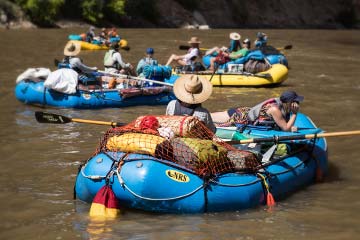Putting Rescue Skills to Use on the Water
Due to your cookie choices, we cannot show you this content. Adjust your settings?
Wrapping up this excellent series, swiftwater rescue expert Jim Coffey shows how the skills covered in the previous videos can be put to use on a typical day on the river with a mixed group of kayakers. One of the less skilled paddlers has to swim, and both he and his boat need to be rescued.
From our lawyers: The series is a supplement to, not a substitute for, hands-on training classes.
In the video Jim and his crew are simulating what can happen in a typical day on the river. It’s a mixed group, with varying skill levels. Before you set out you want to talk about what’s planned for the trip and set out who’s going first and who’s running sweep. You want to put less experienced boaters in the middle. Also, inventory what equipment each paddler is bringing and make sure it’s readily available.
One paddler gets stuck in a hole and has to swim. He loses touch with his boat and makes the mistake of standing up in swift water and gets a foot entrapment. The rest of the crew scrambles to the rescue.
Some go to the trapped person, someone sets up with a throw bag as downstream-safety, and someone takes over leadership of the rescue effort. They use ropes to pull the swimmer free and pendulum him safely into shore.
Once the person is safe, they can move to rescuing the equipment. They find the boat surfing in a hole. They use the live-bait technique to swim out, attach a rope to the boat and pull it to shore.
Our hope is that as you work to improve your boating skills, you also are working to improve your river rescue skills. It’s not good enough to just watch these videos; it’s very important to take a swiftwater rescue course, then to practice the skills learned, out on the water.
 NRS Gift Card: Always Fits, Always Wanted
NRS Gift Card: Always Fits, Always Wanted




